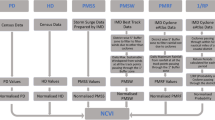Abstract
Hazards associated with tropical cyclones are long-duration rotatory high-velocity winds, very heavy rain and storm tide. India has a coastline of about 7,516 km of which 5,400 km is along the mainland. The entire coast is affected by cyclones with varying frequency and intensity. The India Meteorological Department (IMD) is the nodal government agency that provides weather services related to cyclones in India. However, IMD has not identified cyclone-prone districts following any specific definition though the districts for which cyclone warnings are issued have been identified. On the other hand, for the purpose of better cyclone disaster management in the country, it is necessary to define cyclone proneness and identify cyclone-prone coastal districts. It is also necessary to decide degree of hazard proneness of a district by considering cyclone parameters so that mitigation measures are prioritised. In this context, an attempt has been made to prepare a list of cyclone hazard prone districts by adopting hazard criteria. Out of 96 districts under consideration, 12, 45, 31 and 08 districts are in very high, high, moderate and low categories of proneness, respectively. In general, the coastal districts of West Bengal, Orissa, Andhra Pradesh and Tamil Nadu are more prone and are in the high to very high category. The cyclone hazard proneness factor is very high for the districts of Nellore, East Godawari, and Krishna in Andhra Pradesh; Yanam in Puducherry; Balasore, Bhadrak, Kendrapara and Jagatsinghpur in Orissa; and South and North 24 Parganas, Medinipur and Kolkata in West Bengal. The results give a realistic picture of degree of cyclone hazard proneness of districts, as they represent the frequency and intensity of land falling cyclones along with all other hazards like rainfall, wind and storm surge. The categorisation of districts with degree of proneness also tallies with observed pictures. Therefore, this classification of coastal districts based on hazard may be considered for all the required purposes including coastal zone management and planning. However, the vulnerability of the place has not been taken into consideration. Therefore, composite cyclone risk of a district, which is the product of hazard and vulnerability, needs to be assessed separately through detailed study.












Similar content being viewed by others
References
BMTPC (2006) Vulnerability Atlas of India: Earthquake, windstorm and flood hazard maps and damage risk to housing, Published by building materials and technology promotion council, Ministry of housing and urban poverty alleviation, Government, of India
Flierl GR, Robinson AR (1972) Deadly surges in the Bay of Bengal: dynamics and storm tide tables. Nature 239:213–215
IMD (1972–2009) Storms and depressions over the Bay of Bengal and Arabian Sea, IMD, Mausam
IMD (2002) Damage potential of tropical cyclones. Published by IMD, Pune, pp 1–29
IMD (2003) Cyclone manual. Published by IMD, Lodi Road, New Delhi-110003
IMD (2008) Tracks of cyclones and depressions (1891–2007), Electronic Version 1.0/2008, Published by IMD
Mohapatra M, Kumar Naresh, Bandyopadhyay BK (2009) Role of mesoscale low and urbanisatioin on exceptionally heavy rainfall event of 26th July 2005 over Mumbai: some observational evidence. Mausam 60:317–324
Mohapatra M, Bandyopadhyay BK, Tyagi A, Raj YEA (2011) Characteristics of best track parameters of tropical cyclones over the North Indian Ocean. IMD Met. Monograph no. cyclone warning division no. 07/2011. Published by IMD, New Delhi. pp 1–30
Murty TS, Flather RA, Henry RF (1986) The storm surge problem in the Bay of Bengal. Prog Oceanogr 16:195–233
NDMA (2008) ‘National disaster management guidelines: management of cyclones. Published by NDMA. Govt. of India, Safdarjang Enclave, New Delhi
Rao AD, Chittibabu P, Murty TS, Dube SK, Mohanty UC (2007) Vulnerability from storm surges and cyclone wind fields on the coast of Andhra Pradesh, India. Nat Hazards 41:515–529
WMO (2009) Tropical cyclone operational plan for the Bay of Bengal and the Arabian Sea, tropical cyclone programme (TCP) report no. TCP-21, 2009 Edition, WMO/TD No. 84
Acknowledgments
We are thankful to NDMA and IMD for identification of the problem for study. We thank IMD and BMTPC for making available the required data for the work. We thank Cyclone Warning Division of IMD, New Delhi, especially Shri D. P. Nayak for data collection and technical support for this work. We also acknowledge Shri R.P. Sharma, Shri Kalu Ram and Shri M.G. Mittal, Assistant Meteorologists of Cyclone Warning Division, IMD, New Delhi for their support during the work.
Author information
Authors and Affiliations
Corresponding author
Rights and permissions
About this article
Cite this article
Mohapatra, M., Mandal, G.S., Bandyopadhyay, B.K. et al. Classification of cyclone hazard prone districts of India. Nat Hazards 63, 1601–1620 (2012). https://doi.org/10.1007/s11069-011-9891-8
Received:
Accepted:
Published:
Issue Date:
DOI: https://doi.org/10.1007/s11069-011-9891-8




